Coralie Hinkley, who has died in Sydney in her 99th year, was born in the inner-Sydney suburb of Glebe to Vera and John Hinkley. She was a fifth generation Australian and was educated at Maroubra Junction Primary School, then at a boarding school in Springwood in the Blue Mountains, and finally at SCEGGS (Sydney Church of England Girls’ Grammar School). The Hinkley name was a prominent one across Sydney after Coralie’s father established the exclusive jewellery store, Hinkley’s Diamonds, in busy Castlereagh Street in 1920. Although the enterprise was sold by the family on John Hinkley’s death, the Hinkley name was retained by the new buyers and the store was active for close to 100 years.
Coralie Hinkley first became interested in dance while at school when an afternoon concert featured dances by ‘a visiting European dance group’.1 She later began serious dance studies with Gertrud Bodenwieser, whose dancers she had seen at that afternoon concert, and eventually became a member of the Bodenwieser Ballet and a teacher for the Bodenwieser enterprise. She often wrote of her lasting admiration for Bodenwieser, saying on one occasion:
… the experiences dancing with Gertrud Bodenwieser heightened my creative awareness contributing to the freeing of imaginative sources so that now I am able to activate the creative energy not only in dance but in the expressiveness of the world … 2
The photograph below on the left is dedicated to Bodenwieser and is inscribed on the back with the words, ‘To Madame. Your devoted pupil always. Love Coralie.’
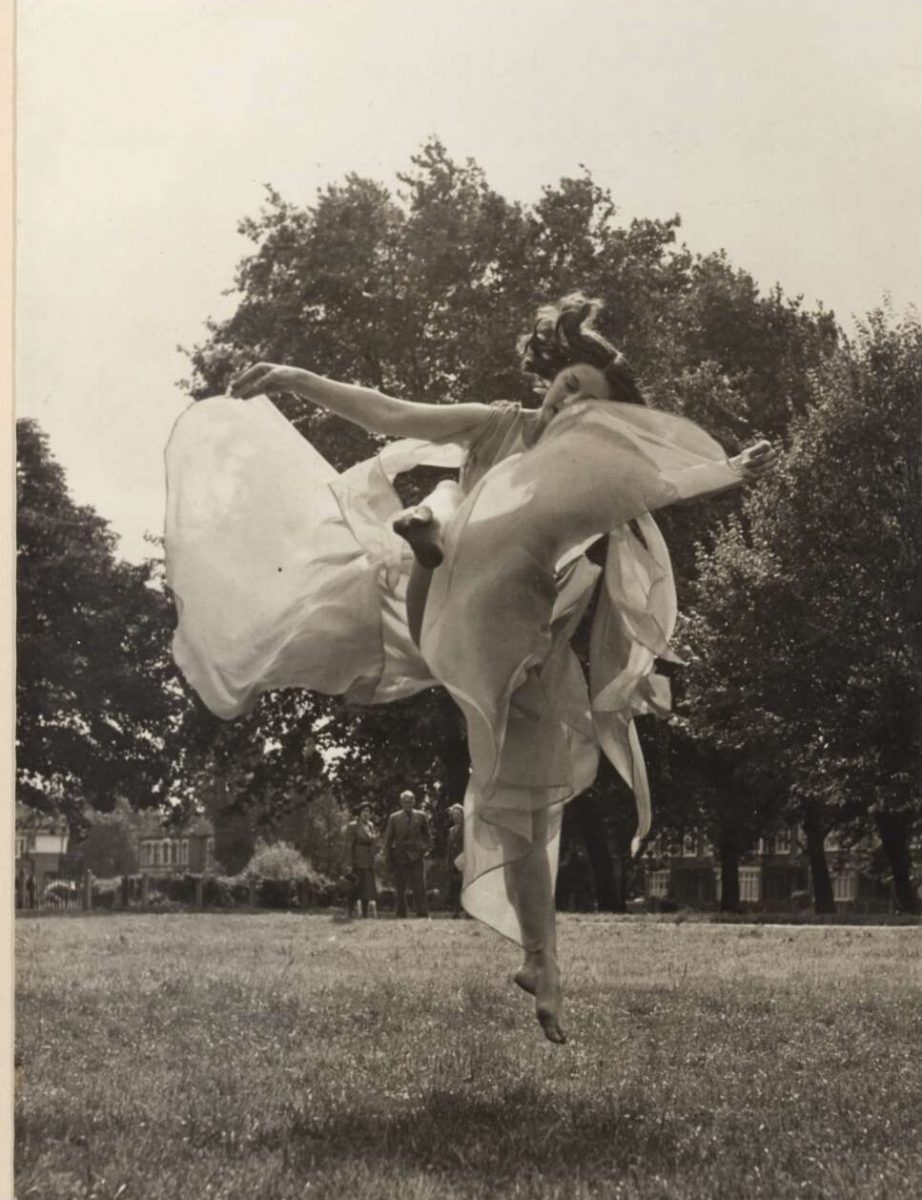
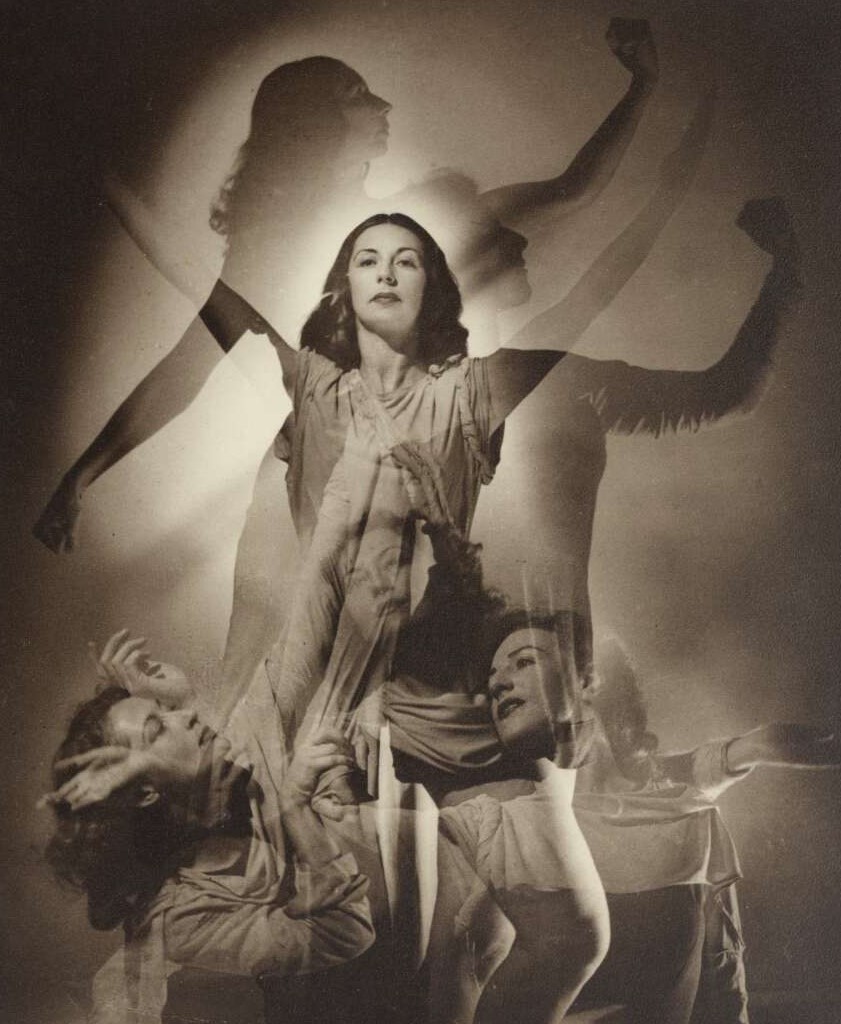
In 1956, while still with Bodenwieser, Hinkley choreographed Unknown Land, based on imagery she found in the poetry of Rex Ingamells. It was danced to a commissioned score by John Antill and it formed part of her application for a Fulbright Scholarship, which she was awarded in 1957. As the first Australian dancer to be awarded a Fulbright for graduate study in modern dance, she spent the next three years in the United States where she studied with Martha Graham, Doris Humphrey, Louis Horst and Merce Cunningham. Each of these choreographers she credited with giving her new insights into dance and performance, but of Doris Humphrey she wrote, ‘It was largely due to the influence and teachings of Doris Humphrey that I began to create and choreograph.’3
On her return to Australia after her Fulbright studies she continued to pursue her choreographic interests. In the 1960s and 1970s she staged several works for Ballet Australia, the choreographic company established by Valrene Tweedie in 1960. Those works included Éloges, Day of Darkness, Improvisations, L’Isle joyeuse, The Forest and Ritual for Dance Play and Magic. A number of these works were first performed by the Fort Street Dance Group, which Hinkley had established as part of her teaching program at Fort Street Girls’ High School. Hinkley started this creative dance program in 1963 and continued teaching until 1975, with that last year being conducted at Fort Street High School, with the name change reflecting the fact that the school had become co-educational.
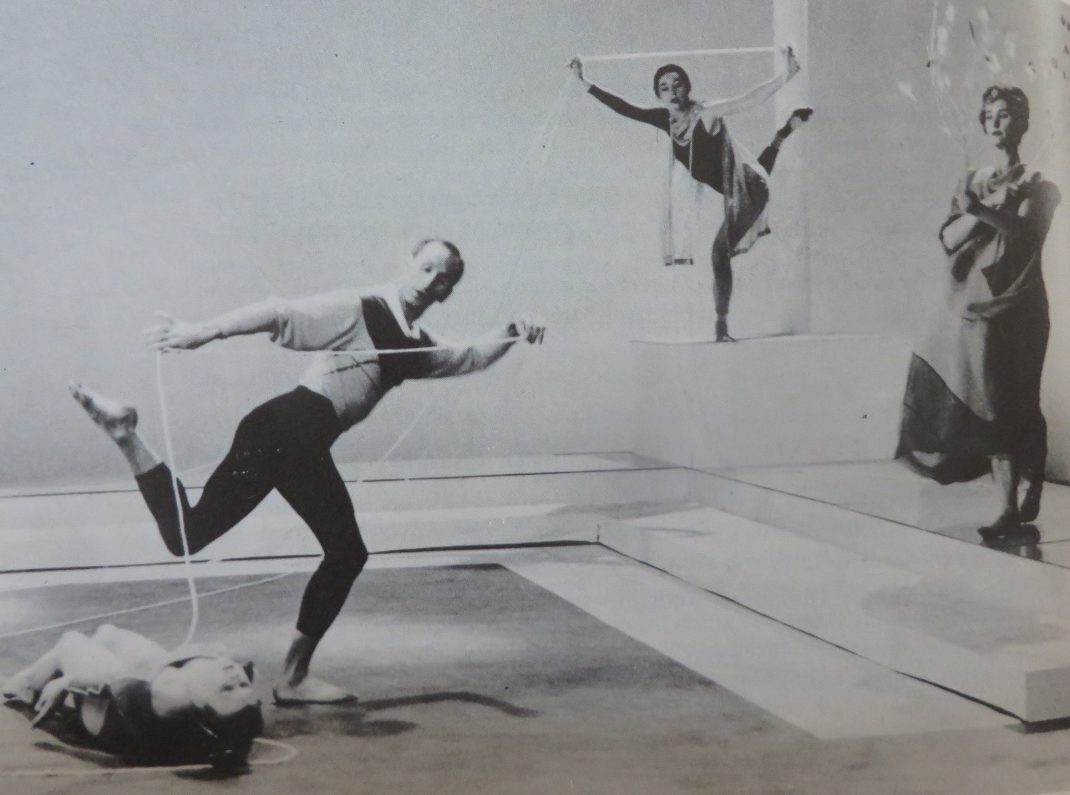

Her work during that time was filmed on occasions. Choros, for example was filmed by the Physical Education Department at Sydney University and was awarded a special prize for cultural and educational merit. The Chairs was filmed by the Commonwealth Film Unit as part of the series Australian Diary and was shown around Australia and overseas.
Following the Fort Street experience, Hinkley went on to pursue tertiary teaching activities over a number of years most significantly with Catholic Colleges of Education from 1976 to 1984. In 1989 she worked with students taking the Diploma in Dance Education at the Sydney Dance Development Centre, and gave creative workshops at the Centre for Human Aspects of Science and Technology at the University of Sydney.
Following her 1980 publication Creativity in Dance, Hinkley wrote several books of poetry, which are intended as source material for creative movement, as well as books related to her creative practice.
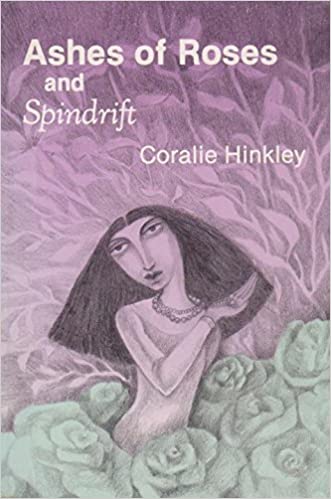
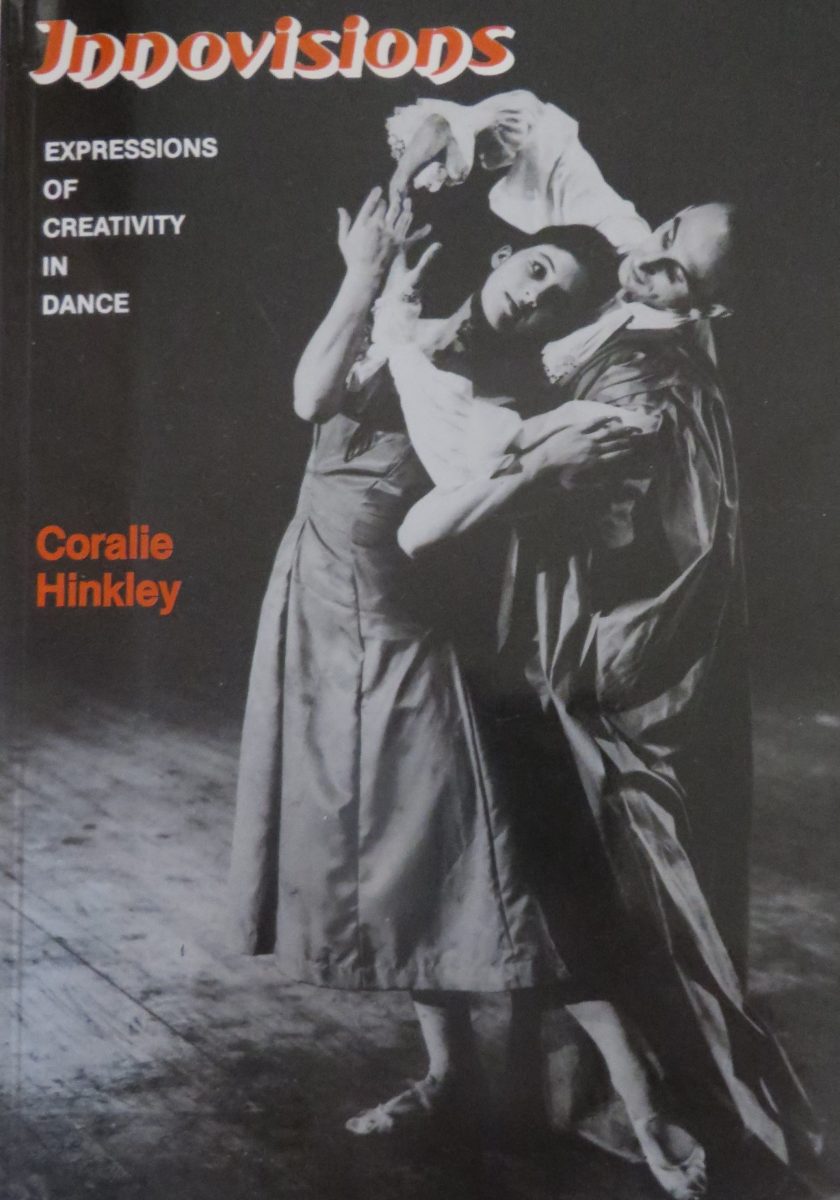
Hinkley’s sources of inspiration for her choreography were many and varied. She often found inspiration in the visual arts. Of her work The Forest, made for the Fort Street Dance Group, she wrote, ‘The dancers represent the emaciated sculptural beings of Giacometti—and his conception of life—of man’s inability to communicate with his fellow man.’4 Poetry was also inspirational for her, going back to 1956 with Unknown Land and the work of Rex Ingamells. Musically, her taste was eclectic and she favoured Australian composers when she could, again going back to Unknown Land and John Antill. And, while the choreographers she worked with in the United States as a Fulbright scholar continued to have an influence on the structure of her works, she probably was always influenced most by her earliest mentor, Gertrud Bodenwieser.
‘As dancers our “creative personality” was brought into focus by Gertrud Bodenwieser, who in her search for truth and beauty could touch the human spirit … that is why I stayed so long.’5
Coralie Hinkley died in Sydney on 21 September. She is survived by her daughter, Sancha Donald.
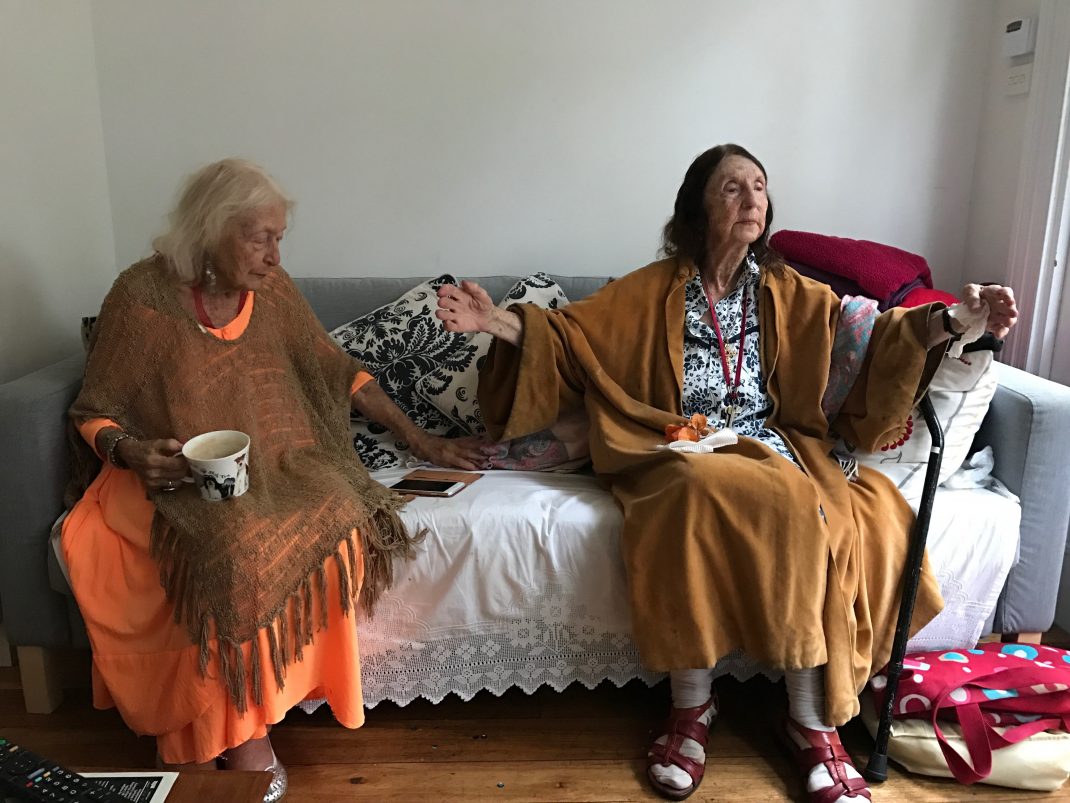
Coralie May Hinkley: born Sydney, 23 September 1922; died Sydney, 21 September 2021
Michelle Potter, 22 September 2021
Featured image: Coralie Hinkley in costume for O World (detail), Bodenwieser Ballet, 1950s. Photo: © Margaret Michaelis
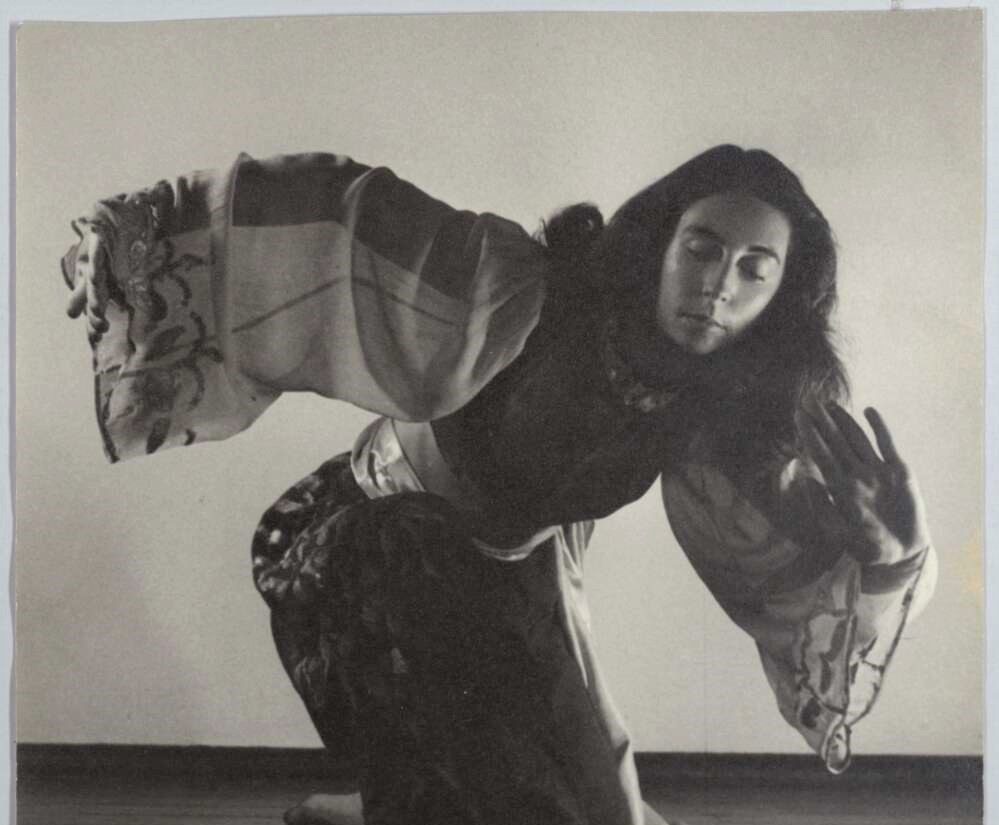
Notes
Coralie Hinkley was interviewed twice for the National Library of Australia’s oral history program. Neither interview is available online due to restrictions placed on them by Hinkley. Transcripts are available but cannot be accessed at present given that the National Library is currently closed due to COVID lockdown in the ACT. This situation has limited the scope of this obituary for the moment.
1. Coralie Hinkley, ‘Reflections on dance at Fort Street.’ In The Fortian, 1976, p. 77.
2. Coralie Hinkley, ‘Vision’. In Bettina Vernon-Warren and Charles Warren (eds), Gertrud Bodenwieser and Vienna’s Contribution to Ausdruckstanz (Harwood Academic Publishers, 1999) p. 167.
3. Coralie Hinkley, Innovisions. Expressions of Creativity in Dance (Cygnet Books, 1990) p. 12.
4. Hinkley, ibid, p. 40.
5. Hinkley, ibid. p. 5.
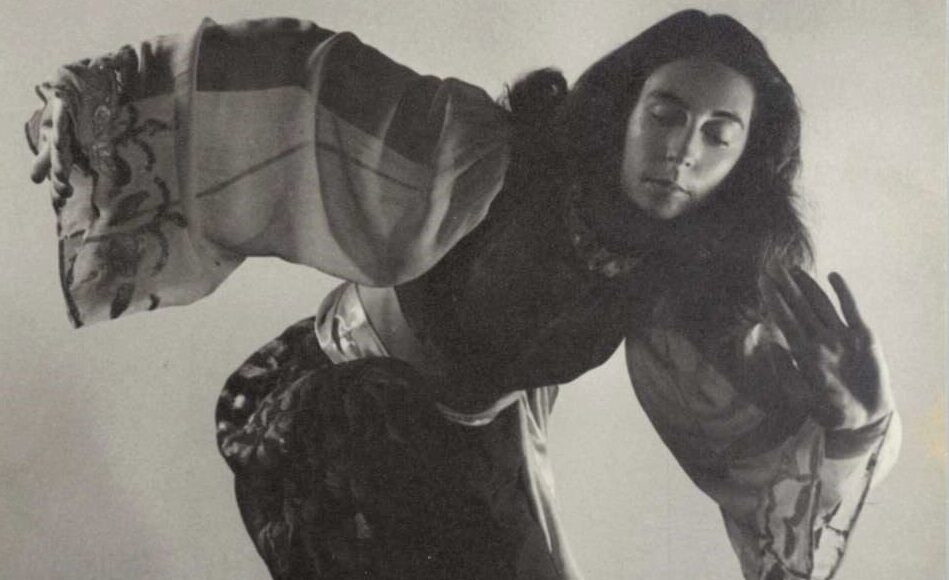
Coralie was such a unique person with an extraordinary capacity for work and creativity, she will be sadly missed from the Dance world, and by family and friends.
I danced with lots of her ex dance students from Fort Street Girls’ High, where they later danced with the ‘Margaret Barr Dance Group’, those students were beautiful dancers highly committed, and always spoke of their wonderful experiences with Coralie and the joy of dance.
In the late 1970’s I also danced with Coralie, Kai Tai Chan and Garry Lester and the “One Extra Dance Co”, Kai Tai choreographed “Highway” which Coralie absolutely enjoyed dancing in, she was an inspiration to us all.
Alex and Annette Hood also interviewed Coralie for the National Library Oral History, what an amazing story and life. Annette Hood
Thanks Annette. I am of course aware of the interview you mention. I also interviewed Coralie for the NLA. Unfortunately neither interview is currently available due to the lockdown in the ACT. You mention various connections that are not mentioned in my obituary, connections with One Extra and Margaret Barr for example. And there is much more that could have been said about her Bodenwieser activities – I am fascinated, for example, by Bodenwieser’s Central Australian Suite, which Coralie danced with Keith Bain and which is available for viewing at the NFSA (also locked down at the moment). Much more could be written!
I was only slightly aware of Coralie’s creative history. I became aware of her over the past few years after meeting her in various locations around Woollahra. She would wander around, dressed in the most marvellous floating outfits, and was always rather cryptic about her life. Prying was definitely not allowed. She was very happy to be provided with a meal or two from Charcoal Charlie’s on Queen Street and on one occasion after getting her dinner, I drove her the very short distance to her home because she was exhausted. I helped her inside – her house though a little dusty, was filled with books and evidence of a rich cultural life. I’ll greatly miss her presence. She was an exciting character with a great deal of personal authority and pride. Goodbye dear Coralie. My whole family will miss you in our world. X
So nice to hear your thoughts Vivienne. I have heard that Coralie was a well-known figure in Woollahra in the last few years of her life and it is lovely to read your description. And yes, she was cryptic, as you put it. I did an oral history interview with her for the National Library and I recall quite clearly that there was no way she was going to divulge her date of birth. We did the interview in her house so I know how you felt when you helped her inside. As I said, lovely to hear from you as someone who knew her, and interacted with her, outside of her dance life.
I lived in Holdsworth Street Woollahra for ten years and my parents are still there. Coralie was a big part of my children’s lives and often spent time with them as youngsters drawing and reading poetry. I remember Halloween when I would dress them up and Coralie would come to the house and ask them to describe in great detail who they were. Both my boys are creatives and Coralie saw that in them. She took great delight in their drawings and minds.
She did share her life story with my family, in fact her daughter taught at my old school Kincoppal.
She was certainly a character and well known on the streets of Woollahra, but not many people would not know of her talent and career. Thank you for sharing..
We will miss you Coralie.
Thank you Caroline. It is wonderful to hear from those who knew Coralie as a neighbour and resident of Woollahra. Those of us who knew her mostly as a dancer and choreographer are hearing such interesting stories from a quite different perspective. But her interest in creativity seems always to shine through.
Miss Hinkley was my PE teacher at Fort St. Our lessons were far away from the usual phys ed class but were greatly enjoyable. She was a flamboyant and passionate character dedicated to her dance. She changed my view of the world. Many of us Fortians have fond memeories of Miss Hinkley. She will be sadly missed.
From one Fortian to another, thank you!
Coralie was my dearest and most energetic art student at the Surry Hill Mission Australia Centre when I taught as a volunteer between 2015-2019. She treasured my wisdom when I did not feel wise at all being 22 when we met but she gave me the confidence to value myself and my creative intuition. She taught me so much and I carry her lessons with me into my teaching today.
Coralie’s activities beyond the dance area continue to surprise me. Thank you for your comment!
Thank you Miss Hinkley, for giving me the space to learn to enjoy the beauty of movement to music. My earlist memory was when she asked my class if anyone had walked barefooted. I was not willing to admit that I enjoy the coolness of grass beneath my feet or sand between my toes, only to feel relief when she told us that that was what was good for us. My last encounter with her was at a school reunion, where she showed me the book she had written and advised that she was still supporting those less privileged. I will always be privileged with the memories I made in her presence
The unforgettable Miss Hinkley of Fort Street Girls High School.
Miss Hinkley once said, as she led us, dressed in our gym bloomers, out onto the grassy slopes of Observatory Hill, that it didn’t matter what people said about you, the important thing was that you were talked about.
Miss Hinkley had been a student of Martha Graham in New York and we were the beneficiaries of her experience with one of the most important pioneers of modernism. She made dance an integral part of our school life. There were extra-curricular classes too, in all types of dance, often led by students.
Miss Hinkley wore leotards, tights and a wrap skirt, all day, every day. Her hair was loose, long and very black. She was flamboyant, eccentric and imperious. She was always moving. She lived as an artist. She was unique.
We lined up at the barre to do pliés and relevés to the crackling Royal Academy of Dance recordings played on her portable in the corner. Miss Hinkley moved along the line, straightening a back here, moving an arm there, giving instructions and physical demonstrations.
At the far end of the gym, facing us, was a painting of modern dancers, swirling in blues, greens and purples, created by a former student. In art class I painted draped, dancing figures. Miss Hinkley once begged me for one of my works and I handed it over. There was no question of saying no.
My last encounter with her was in Queen Street in March last year, just before lockdown. She didn’t recognise me but as I was about to go she told me that I was a very kind girl. She was sitting out in the almost empty street but well aware of the pandemic. Her last words to me carried the concern of a teacher: “and don’t forget to wash your hands! We all have to wash our hands now.”
Vale Miss Coralie Hinkley, artist, teacher and inspiration.
Oh those maroon bloomers! Thanks KH, your recollections are quite moving.
Lovely memories. Thank you Connie
Coralie Hinkley has had a lasting influence on my work as a teacher and educator. From my foundation experiences in dance and creativity in teaching at the Good Samaritan Teachers College, to her collaborations and mentoring during the many decades of my career, her wisdom, imagination, expressiveness and scholarship still permeate my teaching moments today. Poetry, visual arts, dance, drama, creative and reflective thinking are integral to my work today more than ever as I work with gifted students. The special experience that became a chapter in Innovisions still guides my teaching, and I hear her orator’s voice and fluid gestures as I attempt to carry on that creative spirit and energy. It is with tears in my eyes that I thank you for the lasting influence you have had on my life and work.
Thank you John. Over the past week I have been summarising the oral history I did with Coralie for the National Library so that it can (hopefully) be put online via the NLA’s system. I have just today listened to the section about her work with the Catholic College of Education, including the early days at the Good Samaritan College. She mentions you as she discusses those she worked with there and talks about what she refers to as her ‘creative compositions’. I absolutely understand your words about her influence.
I was fortunate to be the percussionist with Coralie at Ft. Street Girls’ high in 1964 (?). It was revelatory to have the freedom to improvise while the girls danced. Soon after I started to play and they moved we became so integrated that you couldn’t find any separation between the movement and the music and everything was improvised. I also played for her dance group at a Cell Block Theatre concert that sent shock waves through the audience and dance world.
There was no rehearsal. 5 dancers went on stage, in the dark, formed an igloo shape, I hit my snare drum like a cannon shot, the spotlight came on and we all improvised for 10 or 12 minutes. The lighting man also had to improvise and he did a great job.
The last time I was in Australia (I’m American) was about 13 yrs. ago, I spent an afternoon with Coralie. I miss her greatly.
Thank you so much George. What an amazing woman Coralie was. A visionary really. It is good to have your reminiscences because should a biography ever be written they will be a great addition.